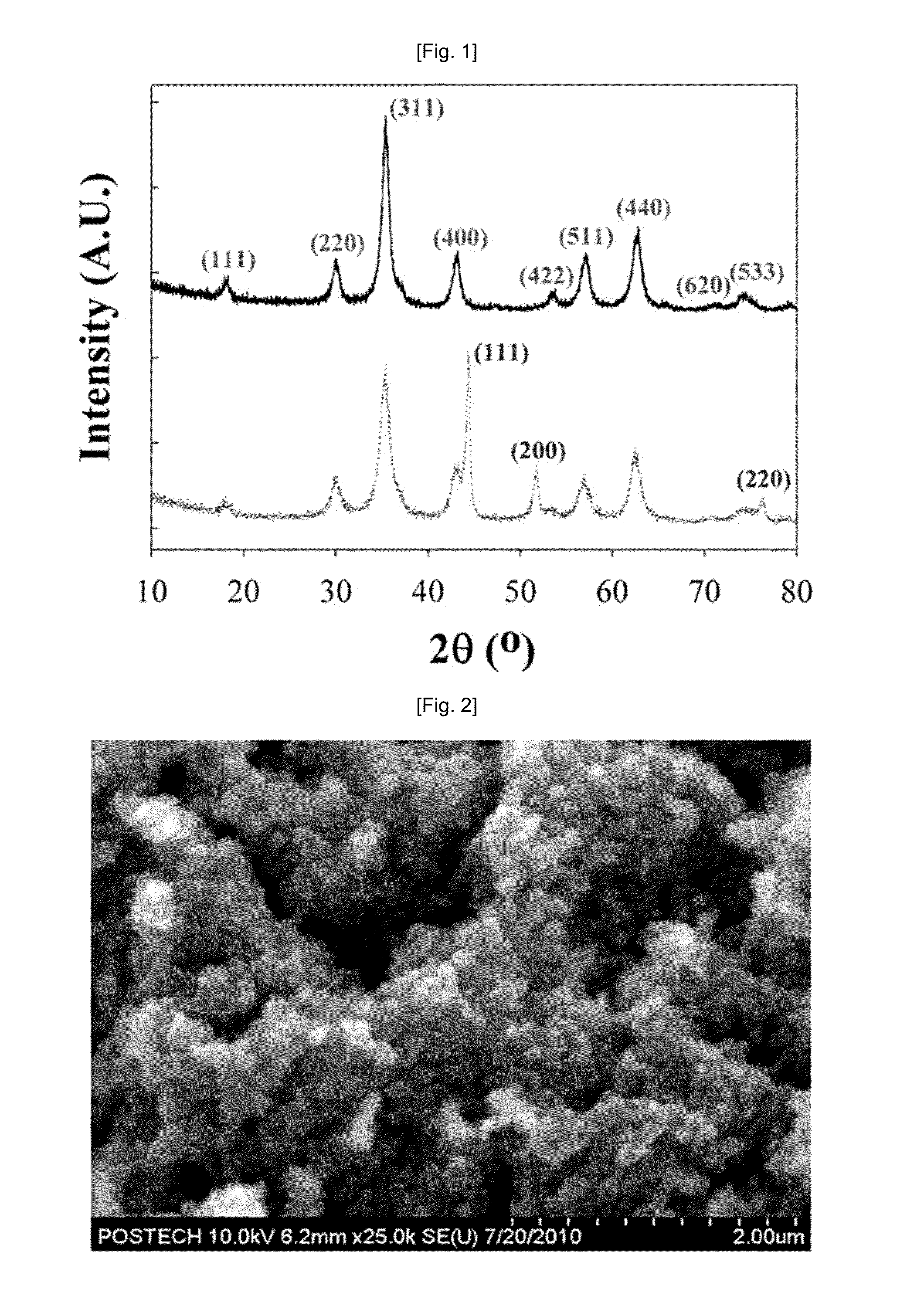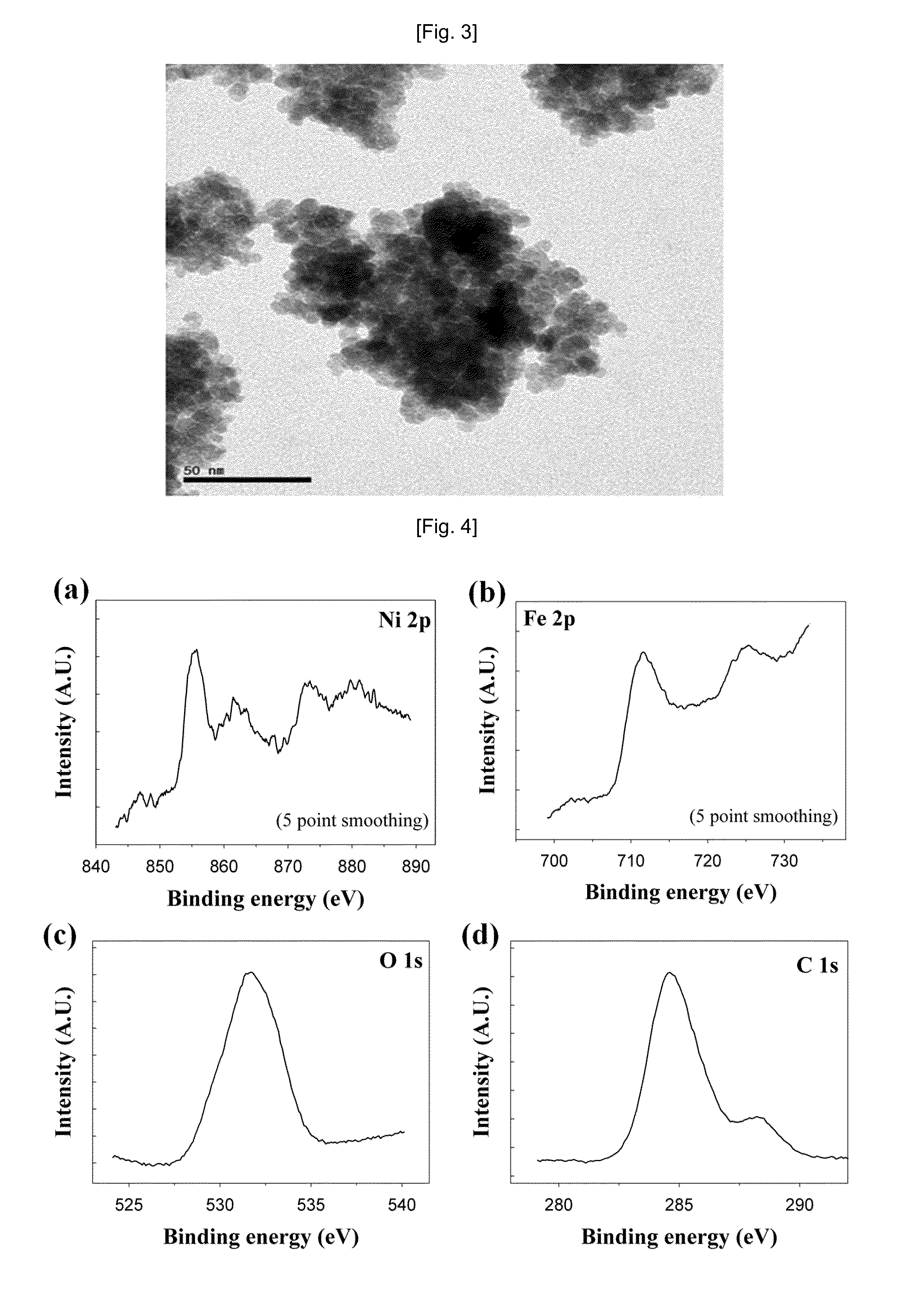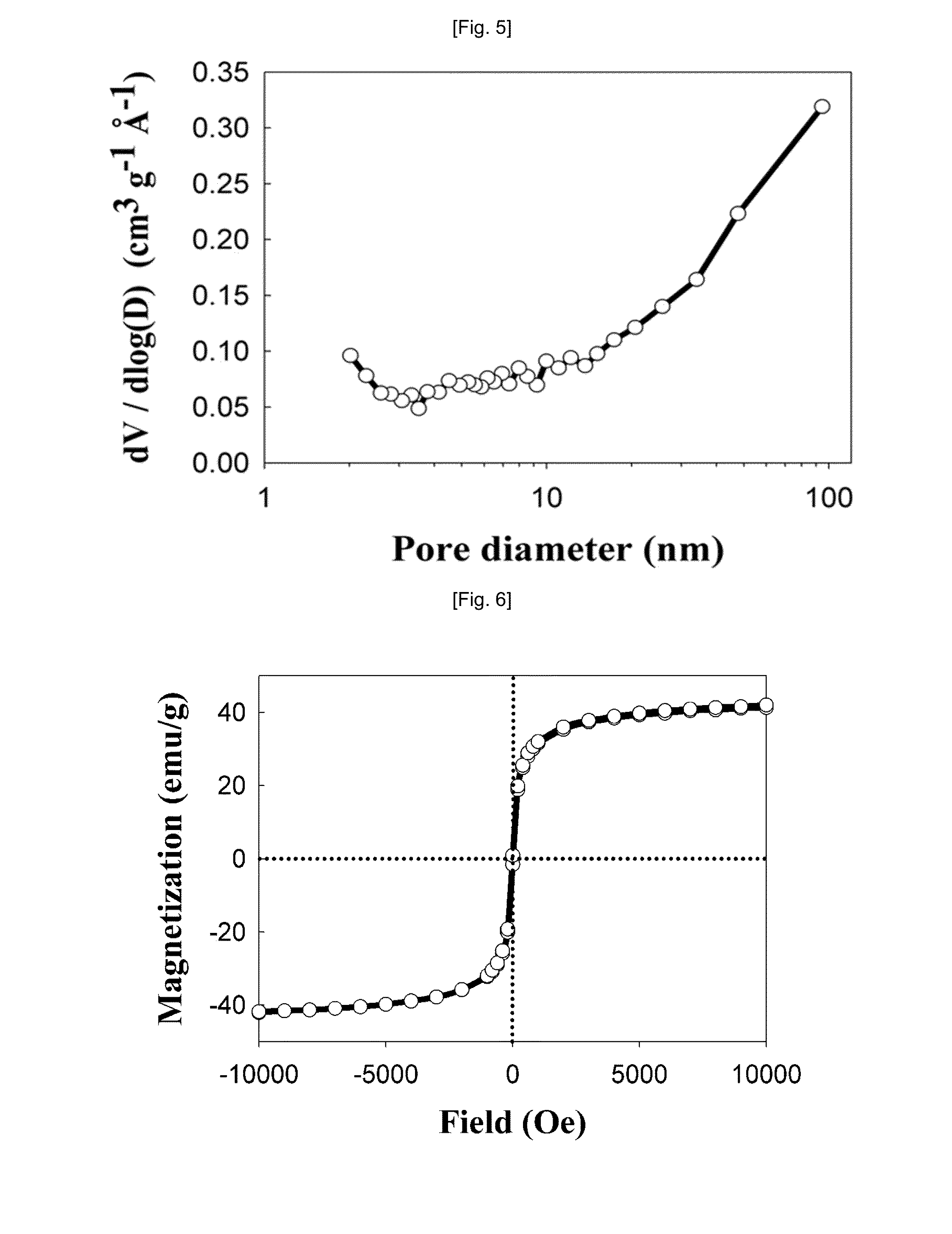Nickel ferrite nanoparticle composite and method for preparing same
a nickel ferrite nanoparticle and composite technology, applied in the field of nickel ferrite nanoparticle composite and the method of preparing same, can solve the problems of difficult recycling of ni/nio nanoparticles, complex multi-step organic synthesis process of ni/nio nanoparticles, /nio core/shell nanoparticles, etc., to prevent loss of separability and simple and economic manner
- Summary
- Abstract
- Description
- Claims
- Application Information
AI Technical Summary
Benefits of technology
Problems solved by technology
Method used
Image
Examples
example 1
Synthesis of NiFe2O4 Nanoparticle Composite
[0056]0.36 g (1.5 mmol) of a nickel precursor compound, NiCl2 (Aldrich, USA), and 0.81 g (3.0 mmol) of an iron precursor compound, FeCl3 (Aldrich, USA), were added to 30 ml of a polyol solvent of ethylene glycol, and dissolved while agitating. 2.16 g of sodium acetate was added as a precipitating agent, and thoroughly agitated for 10 minutes. The resulting mixture was kept for 30 minutes, and agitated while adding an aqueous potassium nitrate solution obtained by dissolving 0.30 g of potassium nitrate in distilled water.
[0057]The resulting solution was put into a Teflon autoclave, and heated at a temperature of 200° C. for 8 hours. Thereafter, the solution was cooled to 25° C. in a thermostat to obtain a nanoparticle composite. To remove the polyol solvent of ethylene glycol from the obtained nanoparticle composite, the nanoparticle composite was washed several times with ethanol, and then dried at 60° C. for 10 hours.
experimental examples
Experimental Example 1
Analysis of Structure of Magnetic Nanocomposite
[0059]To compare the structures of the magnetic nanocomposites prepared in Example 1 and Comparative Example 1, the magnetic nanocomposites were measured using XRD. The XRD measurement results are shown in FIG. 1.
[0060]As shown in FIG. 1, it could be seen that Ni was oxidized into Ni2+, which then formed an inverse spinel structure in the case of Example 1 of the present invention in which the Ni oxidizing agent, KNO3, was added, but in the case of Comparative Example 1 in which the Ni oxidizing agent, KNO3 was not added, Ni was not oxidized but present in the form of a metal, and thus characteristic peaks of the Ni metal phase were observed. From these facts, it was confirmed that KNO3 added as the Ni oxidizing agent had an influence on formation of the structure of the magnetic nanocomposite.
[0061]The SEM and TEM analysis results of the magnetic nanocomposite prepared in Example 1 are shown in FIGS. 2 and 3. As s...
experimental example 2
Measurement of Chemical Binding Structure Using X-Ray Photoelectron Spectroscopy (XPS)
[0062]The spectra of a target metal oxide according to binding energy were measured using X-ray photoelectron spectroscopy (XPS). The measurement results are shown in FIG. 4. As shown in FIG. 4, it could be seen that the binding energy of Ni 2p3 / 2 was shifted to 855.8 eV, which was higher than the binding energy (852.6 eV) of Ni known in the related art, as observed in the Ni 2p spectrum, and thus Ni was maintained in the state of Ni2+.
PUM
| Property | Measurement | Unit |
|---|---|---|
| temperature | aaaaa | aaaaa |
| particle size | aaaaa | aaaaa |
| particle size | aaaaa | aaaaa |
Abstract
Description
Claims
Application Information
 Login to View More
Login to View More - R&D
- Intellectual Property
- Life Sciences
- Materials
- Tech Scout
- Unparalleled Data Quality
- Higher Quality Content
- 60% Fewer Hallucinations
Browse by: Latest US Patents, China's latest patents, Technical Efficacy Thesaurus, Application Domain, Technology Topic, Popular Technical Reports.
© 2025 PatSnap. All rights reserved.Legal|Privacy policy|Modern Slavery Act Transparency Statement|Sitemap|About US| Contact US: help@patsnap.com



